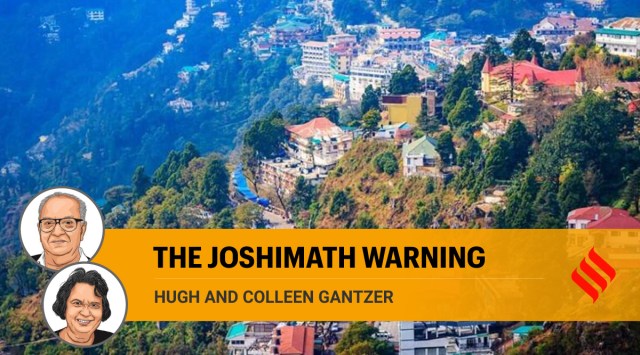
The Joshimath land subsidence is a warning for Mussoorie. This was the comment reportedly made by the National Green Tribunal (NGT). Such a red flag had been raised by another body about Joshimath in 1976. In that year, the Mahesh Chandra Mishra Committee had said that heavy construction should be permitted only after evaluating the ground situation. But the advice was ignored by our politicians and administrators and the disaster occurred. Such an act should not happen in Mussoorie.
On the surface there seems to be little resemblance between the dangers faced by our Himalayan resort and the devastation caused in Turkey and its neighbours. Earthquakes do not originate on the surface. They start deep under the earth where the tectonic plates, on which the continental masses rest, are located. These plates float on slowly shifting coils of molten rock called magma. The Turkish calamity happened in an area where three tectonic plates are in collision. Similarly, our Himalayas are being pushed up because the Indian plate is thrusting under the Eurasian plate like the blade of an enormous bulldozer.
But this is not the only reason for the instability of our mountains. They are also the world’s youngest range and have not had time to adjust to the pressures put on them by living creatures, particularly mankind. It is like putting great burdens on the back of a growing child. The child’s body lacks the capacity to carry the additional load. The carrying capacity of Mussoorie was assessed by a group of experts from the Lal Bahadur Shastri National Academy of Administration and published in 2001. It concluded that “a substantial proportion of land, with a high degree of slope, has been put to urban uses …That the construction cannot expand is clear.” And yet Mussoorie continues to be overbuilt with many unsuitable and dangerous highrises.
To further weaken our overburdened mountains, there is a proposal to lay a ropeway from Dehradun to Mussoorie and to bore a tunnel below the western slopes of our endangered town on grounds that it will reduce the congestion of traffic in Mussoorie. Curiously, neither proposal has established the necessity of the schemes or their likely impact on our fragile and growing mountains. The NGT has reportedly said, “The proposed tunnel below Mussoorie is too dangerous, and so is the proposed ropeway from Dehradun to Mussoorie.” The NGT has constituted a nine-member committee consisting of experts to assess the necessity and feasibility of both schemes. This committee has a reassuring range of experts and stakeholders. It will be chaired by the chief secretary of Uttarakhand, and the members will be from the Wadia Institute of Himalayan Geology, Central Pollution Control Board, GB Pant National Institute of Himalayan Environment, National Institute of Hydrology, Kumaun University, Space Application Centre of Ahmedabad, National Institute of Rock Mechanics of Bangalore and ACS Environment. The report further states that “the study once complete may highlight how much construction can be allowed and with what safeguards. Also, safeguards used for existing buildings and other relevant aspects such as vehicular traffic, sanitation management, maintaining ecological integrity in terms of soil stability and flora and fauna should be covered in the study.” We could not have asked for more, the NGT has fulfilled even our aspirational dreams.
Further, Mussoorie depends on springs for its drinking water. When this became inadequate we shepherded the JUMNA Water Augmentation Scheme through the Supreme Court Monitoring Committee. Politicians and some officials of the Forest Department opposed it and so it was greatly delayed. Local entrepreneurs jumped in and a fleet of tankers grew to tap water from the Dhobighat springs. The area is now collectively referred to as the Mussoorie Lake because of the creation of a boating and snacking facility downstream. But though it was known that the tanker fleet was supplying this untreated water to unsuspecting consumers, nothing was done about it. Such water is likely to be unsuitable for human consumption. Now the NGT has stepped in and banned the supply of it to consumers in Mussoorie.
In fact, Uttarakhand has an abundance of water. A report credited to ISRO states that 5,234 glaciers were monitored between 2001 and 2018 across the Himalayan-Karakorum region from Kashmir to Sikkim. Gangotri and Yamunotri in Uttarakhand are the sources of the Ganga and Yamuna, respectively. The Himalayas preserve and renew these wellsprings of the great, green, Indo-Gangetic plain. We can see both of them coursing through the Doon Valley till they pierce the Shivaliks and reach the great plains.
But the Doon Valley and Mussoorie are in a seismically active zone. Human activity puts further pressure on the region. A warning for Mussoorie is a warning for the whole of Uttarakhand.
Hugh and Colleen Gantzer are travel writers